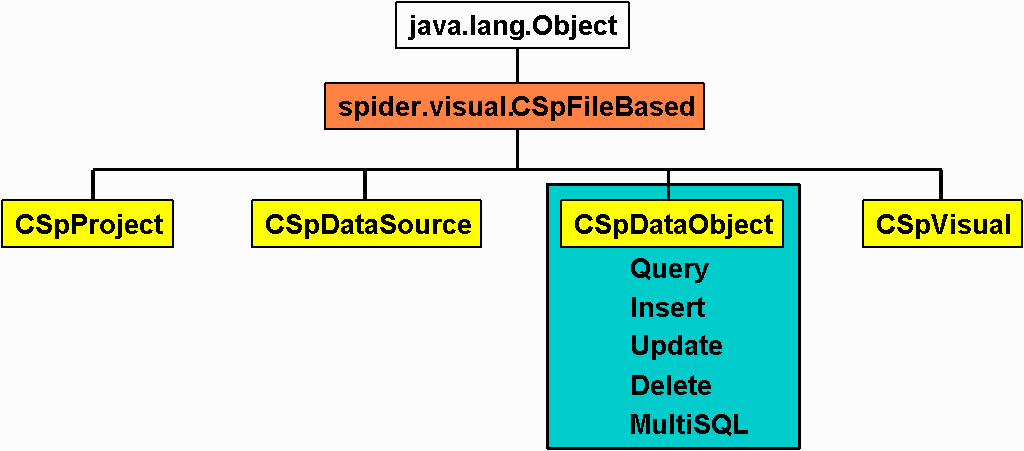

Data Source Object
What is it?
Data Source = Database (or other data store)
It is an abstraction for the database and is represented by the Data Source
object which tells your project about the Database:
what type it is
where it is
how to connect to it
The Studio facilitates the creation of a Data Source object with a Wizard.
The wizard walks you through the steps necessary:
Select a Registered Data Source
The choices are created using NT’s ODBC32 app in Control Panel
The Data Source Object is added to your project
The Data Source represents the Database (or some other data store)
Many types of Data Sources can be included in your project
Just like the Project object,
the Data Source object gets a Java source code file and a property file
<datasource>.java
<datasource>.sds

Data Object
What is it?
Data Object = SQL Statement
(or Stored Procedure)
It is an abstraction for
the data request used to retrieve or modify Data. Data Objects can be very
generic or very specific and can be modified dynamically during runtime.
The Data Object handles RDBMS data requests, SQL - select, update, insert,
delete and Stored Procedures (if the db supports them - MS Access does
not). For Non-RDBMS data requests the DO supports Stored Procedure semantics
only (in, out, input parameters)
The Studio facilitates the
creation of a Data Object with a Wizard. The first step is selecting a
Data Source object, next Name the Data Object and select the Data Access
Type, then select SQL Operation, and then select a Data Source. If you
don't like your options you can create a new Data Source.
The Data Object is added to your project. Remember that the Data Object
represents a SQL statement (or Stored Procedure). The db columns are represented
as Data Fields in of the Data Object.
Just like the other objects,
the Data Object gets a Java source code file and a property file
<dataobject>.java
<dataobject>.sdo

Using Data Sources to reference and attach to the data stores and Data Objects to manipulate the data in the stores we have significant control over the data. The data are then displayed to the ND Page using data fields. These data fields can be repeating fields (aka repeateds) or simply display fields. By "binding" the data objects and fields data is displayed on the page.
We have looked at many of the features of NetDynamics including RAD, the ND Framework, ND Server Architecture, the JDK Event Model and the use of Events in applications, State and Session Management, Security and Interaction with Data Bases.
Making extensive use of Wizards and custom Java classes
ND can be a valuable tool for bringing Web based applications on line quickly.
As with any RAD tool however, the ultimate effectiveness is dependent upon
how the tool is applied. If it is used as part of an overall Business Strategy
which takes the users as well as the business into account, then it will
be a valuable tool, if not, then the end product will be less than it can
be.
Contents NetDynamics Security Back to Yazoo City Project Page